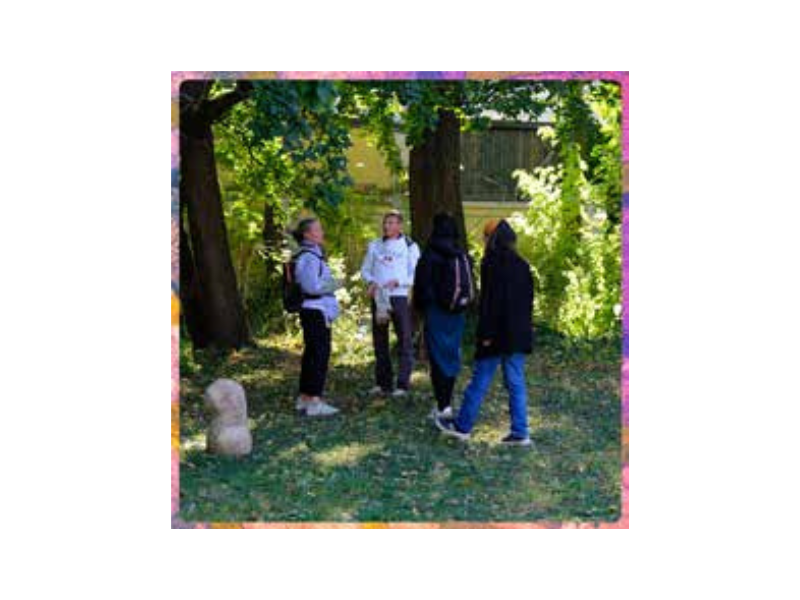
Learning Phase: The class will visit the beehive with the beekeeper at least once.
Concept phase: The class gets the task to connect the beehive with a certain spot in school. This spot will be kind of a portal that connects the school with the experiences they had with the collaboration beehive.
The class will think of their experiences and what they found most fascinating. They will collect ideas of how to transfer their experiences to their school mates. (Honey tasting workshops…).
This project shows an example of colaboration between local beekeepers and educational institutions.



The beehive is an indicator for our surrounding nature. Beekeepers must live with the rhythm nature provides. They do not just keep track of the inside of their hive, they also must live with open eyes and ears to know when it is time for certain tasks. The interactive bee house is an invitation for anyone who is interested in the practices of beekeepers as well as anyone who wants to learn more about the hive of local honey bees. The sculpture changes on the out- and inside during the vegetative period as the living bees do. By visiting it from time-to-time students will notice the undergoing changes, and might keep their eyes open whenever they step outside the educational institution building.
The distance between the beehive and our institution ‘the Angewandte‘ was creating this project as it is now. Connecting those two places opened more fundamental questions for me as a teacher. Schools try to teach children about the world around us while staying on the spot. Connecting distant places is one of many competences’ teachers require. Nowadays due to technological tools it is easier than ever to overcome the distances. This project is an alternative solution on how to connect places on an aesthetical way. By occupying space topics reach out to a bride audience
The school has to offer space and resources for the students to create their projects. A corner of a corridor, an empty wall or the school yard for an one time event might be enough.
Beekeeper, a place at school.
Learning Phase: The class will visit the beehive with the beekeeper at least once.
Concept phase: The class gets the task to connect the beehive with a certain spot in school. This spot will be kind of a portal that connects the school with the experiences they had with the collaboration beehive. The class will think of their experiences and what they found most fascinating. They will collect ideas of how to transfer their experiences to their school mates. (Honey tasting workshops…).
The participants are curious about the bees and will be able to pass their experiences to friends and family. They gain confidence in the interaction with bees. They know the importance of bees for our environment and are aware of where their daily food comes from.
The school has a new interdisciplinary learning tool from students for students with an evaluation sheet

